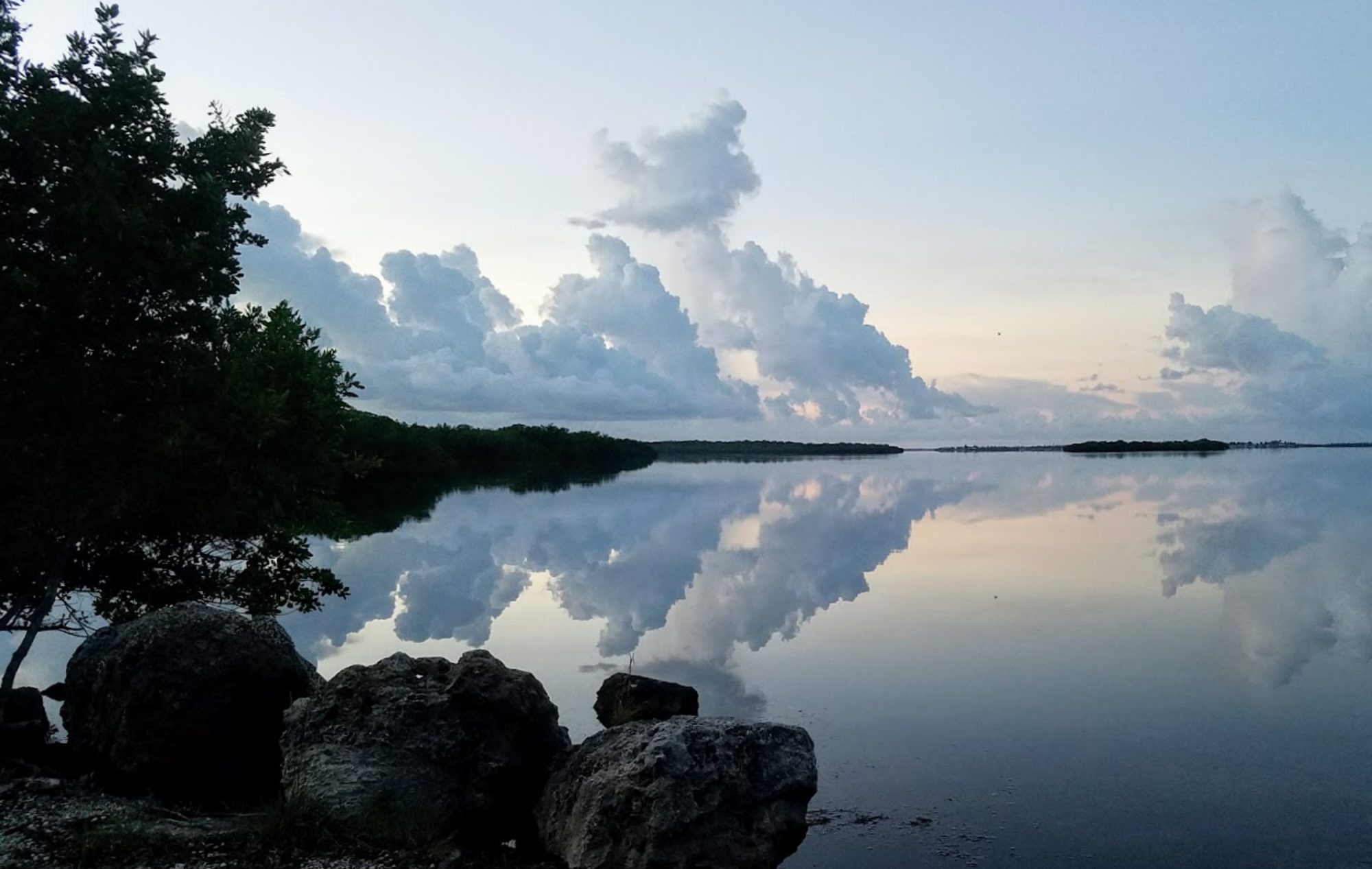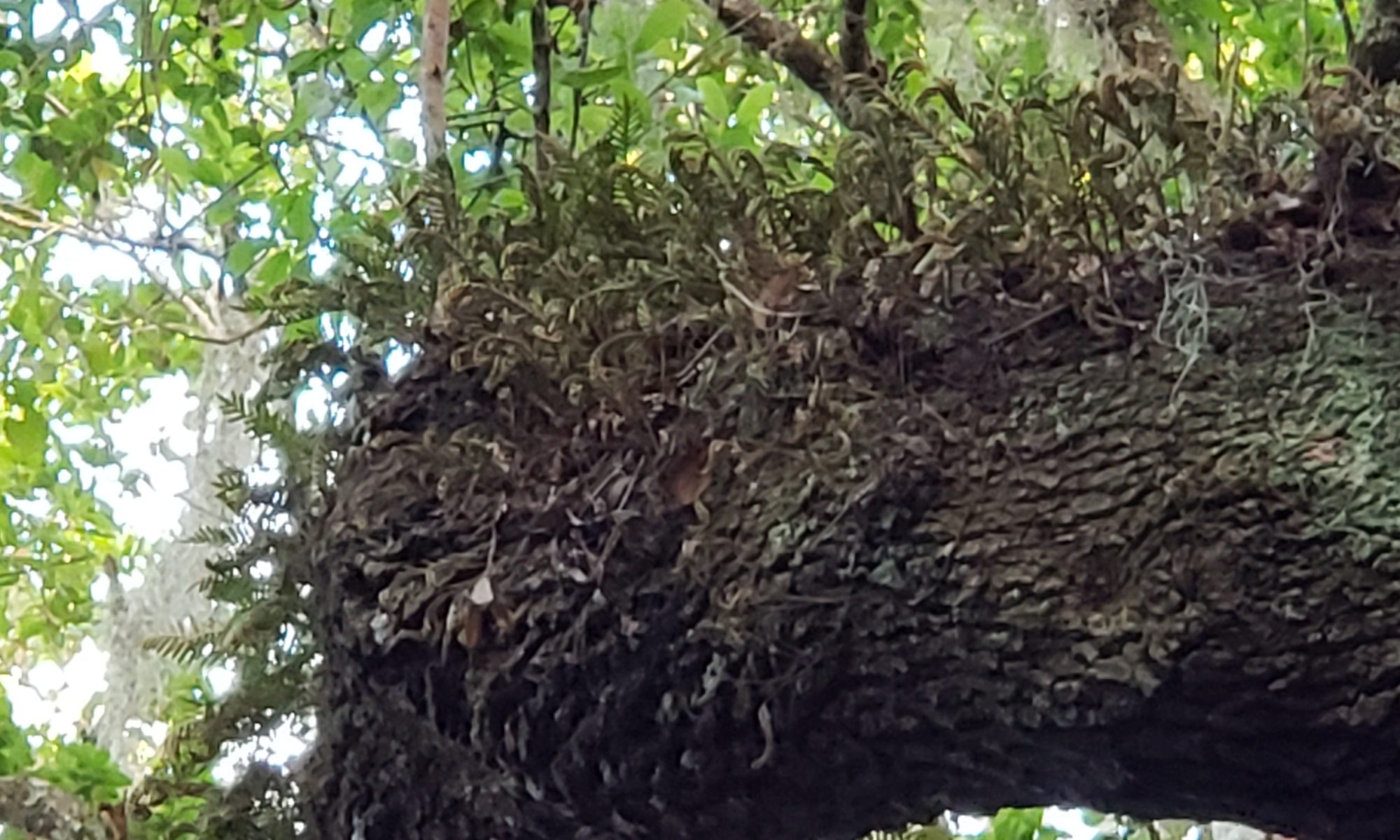Don’t overlook it! Look up into the oaks and you are very likely to see resurrection fern.
It would be easy to overlook this small fern, especially during a drought when it appears to be dead – all crispy brown or gray and curled up on itself. As soon as it rains, though, those crispy bits begin to uncurl and turn green again. Soon, the beauty of this fern reveals itself in lush, vivid greens against the backdrop of the deep brown bark of Florida’s oaks. Because it grows on other plants, resurrection fern is classified as an epiphyte, similar to bromeliads, Spanish moss, and orchids. It has no true roots, but clings to the bark. It is not a parasite and receives only limited nutrients from the bark upon which it lives.
Pleopeltis polypodiodes can be found all over Florida. It thrives in our hardwood hammocks and forests. It’s a native plant that can be found as far north as New York state and as far west as Texas. It even grows in Puerto Rico and the Virgin Islands. What makes the plant so interesting is its ability to lose up to 97% of its internal water and still survive. Compare this to houseplants that cannot live if they lost 9-12% of their internal water, and you’ll come to share my belief that resurrection fern is one tough little plant! It has evolved so that as it loses water, its cells fold up on a way that enables them to unfold, undamaged, when water is once again available.
You may find this plant sold commercially as Rose of Jericho, Dinosaur Plant, or Fern Spike Moss. If you should find a fallen branch with resurrection fern growing on it, you can take it home and keep it growing. If it is dried up, simply water it well and wait for it to begin to unfold and turn green. If you would rather have ferns growing in your trees than your living room, you can wire the branch to your own trees, remembering to locate the fern where it will remain mostly shaded. Eventually, it will drop spores onto your tree and may take up permanent residence there.

